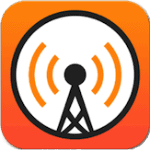
Today, we’re going to be talking about 5 ways to automate your home. We’ll share the tools and devices we use to save time and make life more convenient. Home automation is a relatively new topic and one we’re excited to explore with you today. If you’ve ever thought of purchasing an Amazon Echo, Google Home or Apple Homepod, but haven’t yet, then you’re going to learn how you can use them to save time and be productive. Or if you already have one of the devices, you’ll discover new ways to get the most out of them and in some cases even save money.
Thanks to Grammarly for supporting The Productivity Show. Grammarly is offering our listeners 20% off a Grammarly premium account. Go to Grammarly.com/TPS to learn more.
Cheat Sheet:
- The automation devices that Thanh and Brooks use in their homes, and how they use them [4:50]
- How home automation ties into the TEA framework [9:31]
- The “old school” solution for efficient lighting in your home [10:06]
- Why automated home appliances can make your cooking easier and more consistent [13:46]
- The high tech route for efficient lighting in your home [21:15]
- Why smart technology is extremely helpful for when you aren’t at home to control analog devices directly [30:56]
- How to use smart assistants as the hub for all of your other smart devices throughout your day [35:07]
- How Thanh uses his smart assistant with his housekeeper to stay stocked up [38:12]
Links:
- Grammarly
- Amazon Echo
- MD Live
- Deliveries app
- Automate Your Life: How We Save Over 500 Hours/Year With 5 Time-Saving Techniques (TPS241)
- 4 Tools to Automate Your Technology and Save 100+ Hours a Year (TPS242)
- Sonos
- Mac Power Users podcast
- Breville BTM800XL One-Touch Tea Maker
- Moccamaster
- Vonchef egg electric cooker
- Instant Pot
- Can The “Sandwich Technique” Solve Your Focus Problems? w/ Erin Chase (TPS226)
- 5DollarDinners.com
- Freezer Meals in an Instant: 65 Delicious Freezer Friendly Recipes for Your Electric Pressure Cooker
- Philips Hue
- Lutron Caseta
- WeMo
- Nest
- ecoBee
- HomePod
- Google Assistant
If you enjoyed this episode, subscribe to the podcast on iTunes, Stitcher, Overcast, PocketCast or your favorite podcast player. It’s easy, you’ll get new episodes automatically, and it also helps the show gain exposure. You can also leave a review! Here’s how.




